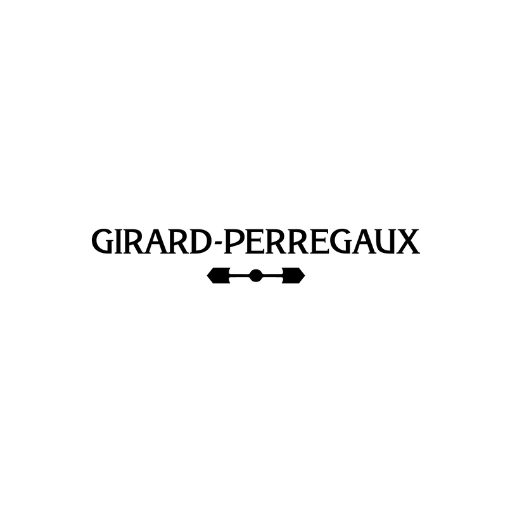-
×
 TAG Heuer Carrera Calibre Heuer 02 CBN2A1B.BA0643
2 × $7,679.00
TAG Heuer Carrera Calibre Heuer 02 CBN2A1B.BA0643
2 × $7,679.00 -
×
 Rolex Lady Datejust 28 M279383RBR-0019
1 × $29,600.00
Rolex Lady Datejust 28 M279383RBR-0019
1 × $29,600.00 -
×
 Omega Seamaster Diver 300m 210.92.44.20.01.002
4 × $11,228.00
Omega Seamaster Diver 300m 210.92.44.20.01.002
4 × $11,228.00 -
×
 Patek Philippe Grand Complication 5236P-001
1 × $171,612.00
Patek Philippe Grand Complication 5236P-001
1 × $171,612.00 -
×
 PATEK PHILIPPE Nautilus Chronograph 5990/1A-001
1 × $0.00
PATEK PHILIPPE Nautilus Chronograph 5990/1A-001
1 × $0.00 -
×
 New IWC Portugieser Automatic IW500704
2 × $12,058.00
New IWC Portugieser Automatic IW500704
2 × $12,058.00
Brands
The Rolex Explorer History
The Rolex Explorer is a renowned line of wristwatches known for their durability and precision. Introduced in 1953, it was designed for explorers and mountaineers, notably worn during the first successful ascent of Mount Everest. Its robust construction, luminous markers, and distinctive design contribute to its popularity. The Rolex Explorer holds significance in watchmaking history for its association with exploration and the pioneering spirit, reflecting Rolex’s commitment to reliability in challenging environments.
The Origins of the Rolex Explorer
The first Rolex Explorer, the reference 6350, was launched in 1953. Its design was inspired by the successful ascent of Mount Everest by Sir Edmund Hillary and Tenzing Norgay in 1953, who wore Rolex Oyster Perpetual watches. The Explorer aimed to embody the qualities required for high-altitude exploration, featuring a durable case, clear legibility, and luminous markers for low-light visibility. Rolex’s collaboration with explorers and mountaineers during this era played a crucial role in shaping the watch, emphasizing functionality and reliability for extreme conditions. The Explorer’s debut marked Rolex’s dedication to creating timepieces tailored for adventurous pursuits.
Evolution of the Rolex Explorer Over Time
The Rolex Explorer has seen several key design changes and innovations over its generations.
- Reference 6610 (1959): The introduction of the Mercedes hands and the incorporation of the Twinlock crown for enhanced water resistance were notable features.
- Reference 1016 (1963-1989): This iconic model featured a matte black dial, white numerals, and the distinctive 3-6-9 hour markers. It became a benchmark for subsequent Explorer designs.
- Reference 14270 (1989-2001): This model brought updates like a sapphire crystal and improved movement, providing enhanced accuracy and durability.
- Reference 214270 (2010): Rolex introduced the “Maxi” dial with larger hour markers and hands for improved legibility. It also featured the Paraflex shock absorbers for increased robustness.
- Reference 214270 (2016): The case size increased from 39mm to 39.5mm, and it featured the caliber 3132 movement with improved accuracy and a longer power reserve.
Key features defining the Explorer’s identity include its durable Oyster case, robust movements, legible dial with distinctive hour markers, and the iconic Mercedes hands. The watch’s focus on functionality and reliability remains constant across generations.
Comparing early models with modern interpretations, advancements like improved movements, materials, and increased size reflect Rolex’s commitment to evolving with technological and design advancements while maintaining the core elements that define the Explorer’s identity.
Rolex Explorer in Exploration and Adventure
The Rolex Explorer has been associated with numerous iconic expeditions and mountaineering feats, contributing to its legacy in exploration culture:
- Sir Edmund Hillary and Tenzing Norgay (1953): The first successful ascent of Mount Everest saw both climbers wearing Rolex Oyster Perpetual watches, laying the foundation for the Explorer’s connection with high-altitude exploration.
- Reinhold Messner (1978): Renowned mountaineer Messner wore a Rolex Explorer II during his solo ascent of Mount Everest without supplemental oxygen, showcasing the watch’s reliability in extreme conditions.
- Thor Heyerdahl (1970s): Explorer and adventurer Heyerdahl, known for expeditions like the Kon-Tiki, wore a Rolex Explorer, testifying to its durability during maritime exploration.
- Yuichiro Miura (1970s): Japanese alpinist Miura wore a Rolex Explorer during his legendary ski descent of Mount Everest, emphasizing the watch’s performance in extreme situations.
- Sir Ranulph Fiennes (Various Expeditions): The renowned British explorer wore a Rolex Explorer during multiple expeditions, including his transglobe journey and polar explorations.
The testimonials from these famous adventurers underscore the Rolex Explorer’s reliability and performance in challenging environments. The watch’s robust construction, precision, and legibility have contributed to its status as a trusted companion for those pushing the boundaries of exploration. The Rolex Explorer has played a significant role in shaping the culture of exploration, symbolizing the spirit of adventure and resilience in the face of adversity.
Collecting and Investing in Rolex Explorer Watches
Vintage Rolex Explorer models are often both rare and highly desirable among watch enthusiasts and collectors. Several factors contribute to the value of Rolex Explorer watches in the market:
- Age and Era: Older vintage models from specific eras, especially those with distinctive design elements, are often more sought after.
- Reference Number: Different reference numbers signify variations in design and features. Some references are rarer and, therefore, more desirable to collectors.
- Dial Variations: Specific dial configurations or variations, including rare and discontinued options, can significantly impact the watch’s value.
- Originality: Watches with original components, including dials, hands, and bracelets, are more valuable. Unpolished cases and untouched components contribute to authenticity.
- Condition: Well-preserved watches in excellent condition generally command higher prices. A watch with minimal wear, an unaltered dial, and a well-maintained case is more desirable.
- Provenance: A Rolex Explorer with a documented history or a connection to a famous individual or event often holds greater value.
- Completeness: Having original boxes, papers, and accessories adds to the overall value of the watch, as it indicates a more comprehensive and well-preserved package.
- Market Trends: The overall demand for vintage Rolex watches, including specific Explorer models, in the market can influence their value. Trends in the watch-collecting community play a role.
- Limited Editions or Special Features: Limited-edition releases or special features, such as unique dials or materials, can significantly enhance a Rolex Explorer’s desirability.
In conclusion, the rarity and desirability of vintage Rolex Explorer models are shaped by a combination of historical significance, specific design characteristics, and the overall condition of the watch. The market for these watches is dynamic, with collectors often placing a premium on authenticity, uniqueness, and well-preserved examples.
Legacy and Influence of the Rolex Explorer
The Rolex Explorer’s enduring appeal in the luxury watch market can be attributed to several factors:
- Timeless Design: The Explorer’s clean and timeless design, characterized by its robust case, distinctive dial, and iconic Mercedes hands, contributes to its enduring aesthetic appeal.
- Versatility: The watch’s versatility allows it to seamlessly transition from rugged outdoor adventures to formal settings, making it a practical and stylish choice for a wide range of occasions.
- Horological Heritage: With its roots in exploration and mountaineering, the Rolex Explorer’s rich horological heritage resonates with those who appreciate a watch with a storied history.
- Craftsmanship and Durability: Rolex’s commitment to craftsmanship and durability is evident in the Explorer’s construction, ensuring reliability and longevity, which are highly valued in the luxury watch market.
- Cultural Symbolism: The Explorer has become a cultural symbol of adventure, resilience, and achievement, adding emotional value to the watch and attracting individuals who identify with these qualities.
The Rolex Explorer’s influence on other watch brands and models is significant:
- Emphasis on Functionality: The Explorer’s focus on functionality and legibility has influenced the design ethos of many sports and adventure-oriented watches across various brands.
- Durable Materials: The use of robust materials like stainless steel and innovations in case construction, inspired by the Explorer, can be seen in other luxury watches designed for challenging environments.
- Tool Watch Aesthetics: The concept of a “tool watch,” designed for specific activities, has been popularized by the Explorer, and other brands have incorporated similar elements into their designs.
- Adventure-Ready Timepieces: The success of the Explorer has encouraged other brands to create watches catering to adventurers and explorers, acknowledging the demand for durable and reliable timepieces.
The Rolex Explorer continues to inspire watch enthusiasts worldwide by embodying a blend of heritage, functionality, and enduring style:
- Collector’s Choice: Vintage and modern Rolex Explorer models remain sought after by collectors who appreciate the watch’s historical significance and design evolution.
- Cultural Icons: The Explorer’s association with iconic explorers and adventurers adds to its allure, captivating individuals who are drawn to the spirit of exploration.
- Global Recognition: The Rolex Explorer’s global recognition as a symbol of quality and prestige ensures its enduring popularity among watch enthusiasts worldwide.
In summary, the Rolex Explorer’s enduring appeal lies in its timeless design, versatile functionality, horological heritage, and cultural symbolism, making it a source of inspiration for both watchmakers and enthusiasts alike in the luxury watch market.
Conclusion
The Rolex Explorer has a storied history dating back to its debut in 1953. Inspired by the successful ascent of Mount Everest, the watch was designed for explorers and adventurers. Over the years, it has undergone key design changes, with notable models like the Reference 1016 and advancements in features and movements.
The enduring appeal of the Rolex Explorer can be attributed to its timeless design, versatility, and association with horological heritage. It has influenced other watch brands, emphasizing functionality, durable materials, and a tool-watch aesthetic.
The Explorer’s significance lies in its cultural symbolism as a symbol of adventure, resilience, and achievement. Worn by iconic explorers like Sir Edmund Hillary and Reinhold Messner, the watch has become a global recognition of quality and prestige.
As we reflect on the rich history of the Rolex Explorer, it invites enthusiasts to explore and appreciate its enduring legacy. Whether delving into vintage models with unique characteristics or embracing modern interpretations, the Rolex Explorer continues to captivate with its blend of history, craftsmanship, and the spirit of exploration. Explore the Rolex Explorer, a timeless icon that transcends the realms of horology and adventure.

 Rolex Lady Datejust 28 M279383RBR-0019
Rolex Lady Datejust 28 M279383RBR-0019  Omega Seamaster Diver 300m 210.92.44.20.01.002
Omega Seamaster Diver 300m 210.92.44.20.01.002  Patek Philippe Grand Complication 5236P-001
Patek Philippe Grand Complication 5236P-001  PATEK PHILIPPE Nautilus Chronograph 5990/1A-001
PATEK PHILIPPE Nautilus Chronograph 5990/1A-001  New IWC Portugieser Automatic IW500704
New IWC Portugieser Automatic IW500704 
















